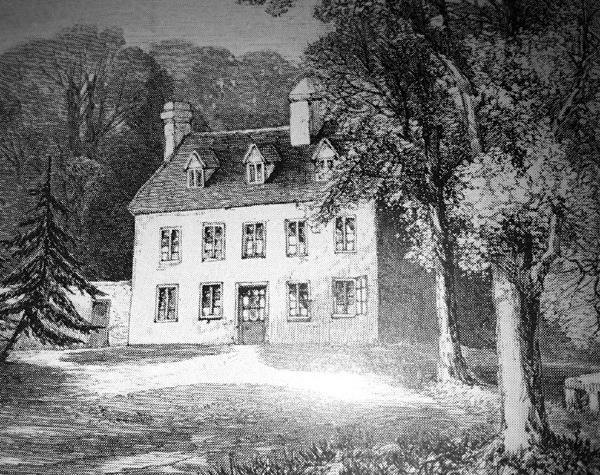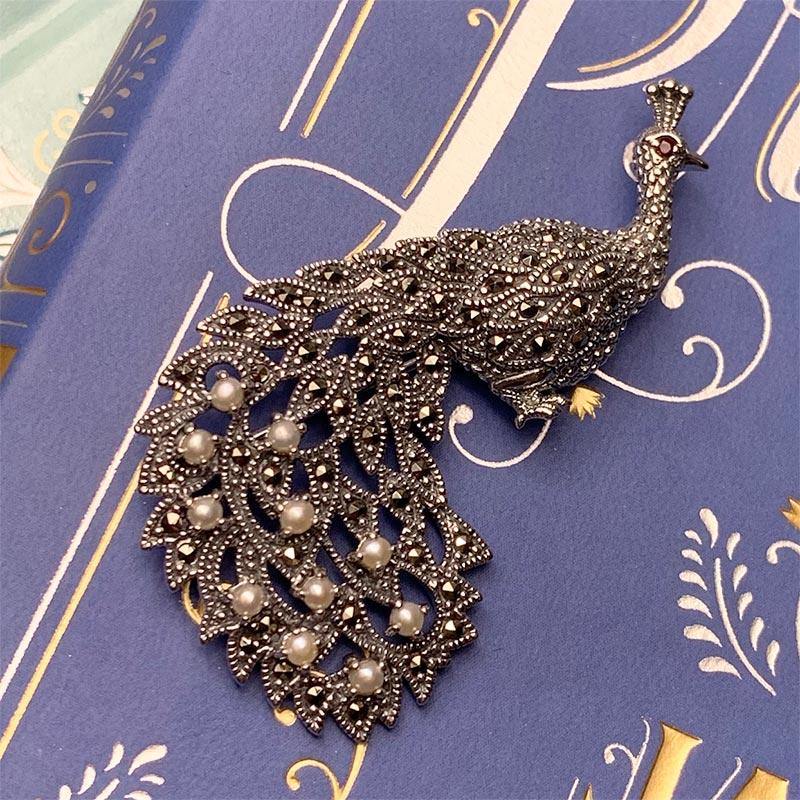Martha Lloyd: Jane Austen's "Second" Sister
"With what true sympathy our feelings are shared by Martha you need not be told; she is the friend and sister under every circumstance." -Jane Austen to Cassandra, October 13, 1808
 Second only to Cassandra, Martha Lloyd (1765-1843) seems to have been Jane Austen's dearest friend. Not much is known of them, though it is supposed that Mrs. Lloyd, daughter of the Royal Governor of South Carolina Hon. Charles Craven, met her future husband in Newbury when she and her sister lived there with an aunt. It is thought their aunt took them in because they had fled from a mother who, by some accounts, treated them badly and by others, was considered mentally unstable. Regardless of the situation, both sisters married country parsons. Martha had four children and the oldest, named after her mother, was born in 1765 and her sister Mary in 1771. A few years later, a smallpox epidemic took the life of their brother and left the two older sisters scarred for life, though the youngest, Eliza, seems to have escaped relatively unharmed. The Lloyd family had much in common with the Austens and from an early time, visits between the two families were frequent. Though no one knows quite how they met, the Austens and Lloyds shared many mutual friends and when the Rev. Lloyd died in 1789, his widow and her two oldest, single daughters were happy to move into the unused Deane parsonage offered by Rev. Austen. Their time there, only a mile and a half from Steventon, must have been a delight for young Jane, for though she was ten years younger than the oldest Lloyd daughter, Martha, they were, as Janes cousin Eliza de Feuillide remarked, "very sensible and good-humored." Three years later, when Jane Austen's brother, James, married and assumed the parish of Deane, it was necessary for the Lloyds to move, this time to a home in Hurstbourne, called Ibthorpe. Though only 15 miles from Steventon, this separation must have seemed cruel to Jane, who had few friends nearby and no mode of transportation. It is clear from Jane Austen's correspondence that her friend Martha was privy to her great secret-- her writing. An early piece of Juvenilia, Frederick and Elfrida, is dedicated to her.
Second only to Cassandra, Martha Lloyd (1765-1843) seems to have been Jane Austen's dearest friend. Not much is known of them, though it is supposed that Mrs. Lloyd, daughter of the Royal Governor of South Carolina Hon. Charles Craven, met her future husband in Newbury when she and her sister lived there with an aunt. It is thought their aunt took them in because they had fled from a mother who, by some accounts, treated them badly and by others, was considered mentally unstable. Regardless of the situation, both sisters married country parsons. Martha had four children and the oldest, named after her mother, was born in 1765 and her sister Mary in 1771. A few years later, a smallpox epidemic took the life of their brother and left the two older sisters scarred for life, though the youngest, Eliza, seems to have escaped relatively unharmed. The Lloyd family had much in common with the Austens and from an early time, visits between the two families were frequent. Though no one knows quite how they met, the Austens and Lloyds shared many mutual friends and when the Rev. Lloyd died in 1789, his widow and her two oldest, single daughters were happy to move into the unused Deane parsonage offered by Rev. Austen. Their time there, only a mile and a half from Steventon, must have been a delight for young Jane, for though she was ten years younger than the oldest Lloyd daughter, Martha, they were, as Janes cousin Eliza de Feuillide remarked, "very sensible and good-humored." Three years later, when Jane Austen's brother, James, married and assumed the parish of Deane, it was necessary for the Lloyds to move, this time to a home in Hurstbourne, called Ibthorpe. Though only 15 miles from Steventon, this separation must have seemed cruel to Jane, who had few friends nearby and no mode of transportation. It is clear from Jane Austen's correspondence that her friend Martha was privy to her great secret-- her writing. An early piece of Juvenilia, Frederick and Elfrida, is dedicated to her.
"As a small testimony of the gratitude I feel for your late generosity to me in finishing my muslin Cloak, I beg leave to offer you this little production of your sincere Freind and later writings prove that she had been allowed to see the manuscript for Love and Freindship, an early edition of Pride and Prejudice and an honor accorded to few."
In 1805, changes abounded for the Austen and Lloyd ladies. Many years had now passed since James Austen's first wife had died and he had remarried, choosing the younger Miss Mary Lloyd to be his second wife. With the Austen's removal to Bath in 1801, James had taken over both the Deane and Steventon holdings and his growing family now lived in the Steventon parsonage. It was while they were living in Bath that Mr. Austen finally succumbed to his long illness and not many months later that Mrs. Lloyd also died. The women, being in a delicate financial state, decided to combine housekeeping and all four (Mrs. Austen, Cassandra, Jane and Martha Lloyd) moved to Southampton to be with Jane's younger brother Frank and his wife, Mary. As an officer in the Navy, Frank was often away from home and this joining of households not only helped him look after his widowed mother, but provided constant companionship for his soon to be pregnant wife. It seems to have been, by all accounts, an excellent arrangement. On July 7th 1809, Jane Austen moved to a cottage in Chawton, together with her mother, her sister Cassandra, and their friend Martha Lloyd, at the invitation of her brother Edward Knight, on whose estate it lay. Their new house was a late 17th century brick building with two sitting rooms, five bedrooms, kitchens, garrets, outbuildings, and about two acres of grounds. It had once been an inn, and stood at the junction where the Gosport and Winchester roads met and became the main road to London. The family remained at Chawton Cottage, even after Jane Austen's death in 1817. Martha Lloyd took on many duties as housekeeper for the family, though the work was divided among the three surviving women. Unfortunately for Frank, by now Sir Francis Austen, his happy home was broken up upon the death of his wife in 1823 after the birth of their 11th child. In 1828 he remarried, completing the family circle by this time, wedding Martha Lloyd. At sixty two, Martha was at last a bride, and more than that, Lady Austen. Her role as Jane Austen's friend and confidant cannot be undervalued and her contribution to what we know of Jane Austen's life is significant. We have not only letters written by Jane to Martha, but Martha's collection of recipes used at Chawton are still with us and have been compiled into two cookbooks, The Jane Austen Household Book and more lately, The Jane Austen Regency Cookbook.
A NOTE ON THE PHOTO INCLUDED IN THIS POST:
A few of our loyal readers have pointed out that the photo included with this post is likely not a likeness of Martha Lloyd. SOURCE: https://archive.org/details/austencollreport_2015/page/n25/mode/2up
*****
Sources for this article included:
Rutgers, Josephine Ross, Jane Austen: A Companion (Rutgers University Press, 2003).
Honan, Park, Jane Austen: Her Life (A Thomas Dunn Book; 1987).
If you don't want to miss a beat when it comes to Jane Austen, make sure you are signed up to the Jane Austen newsletter for exclusive updates and discounts from our Online Gift Shop.




1 comment
I notice you use the photo long accepted to represent Martha Lloyd. You may be interested in this article from the JAS Annual Reports that now refutes that it is her photograph. Interesting reading. https://archive.org/details/austencollreport_2015/page/n25/mode/2up
JOAN REYNOLDS
Leave a comment
This site is protected by hCaptcha and the hCaptcha Privacy Policy and Terms of Service apply.